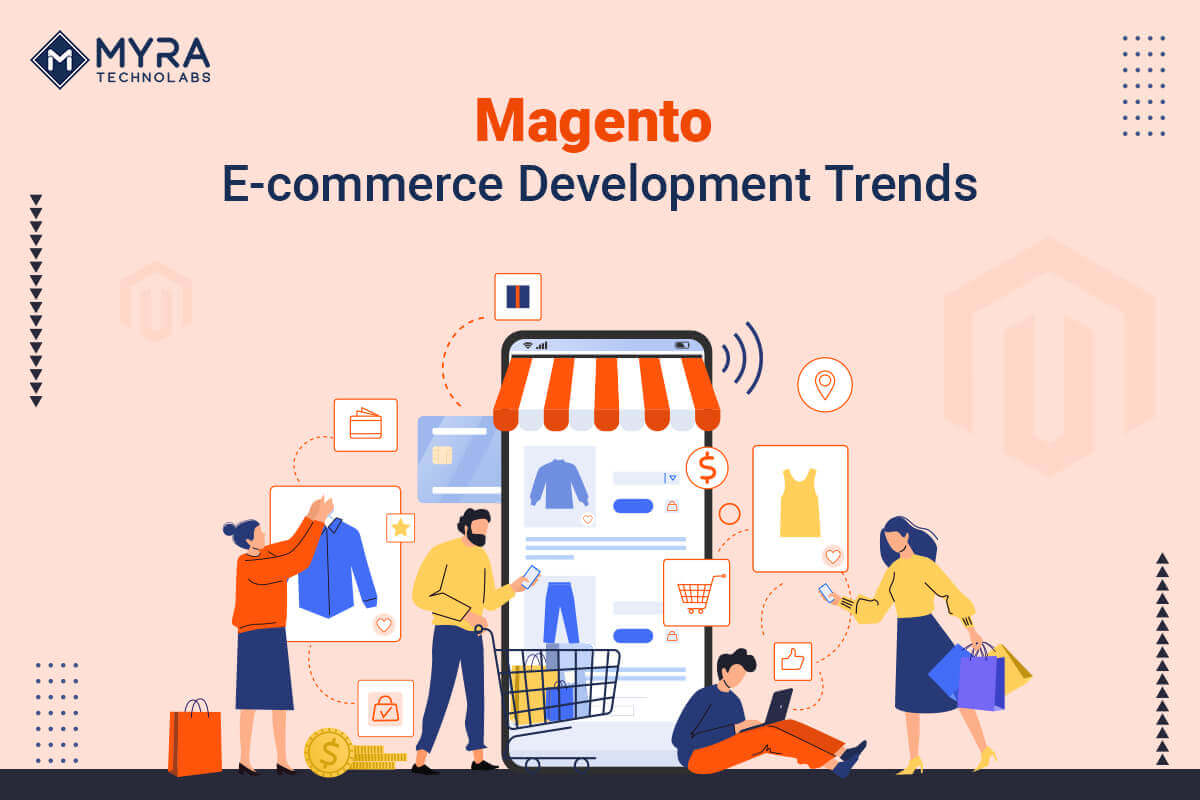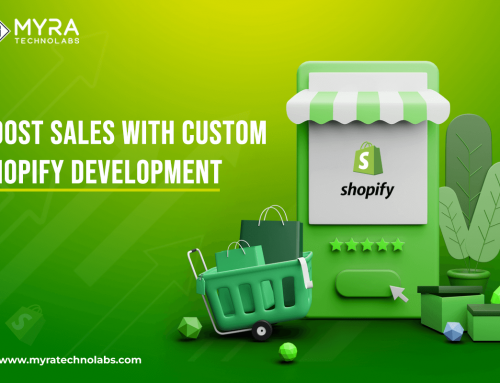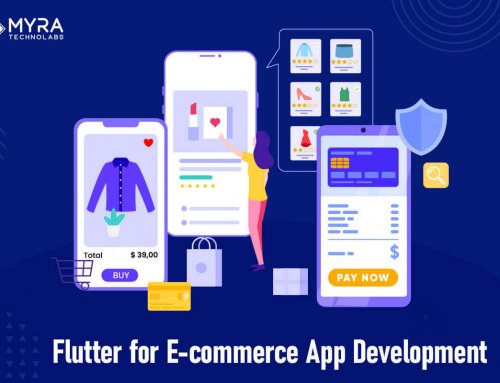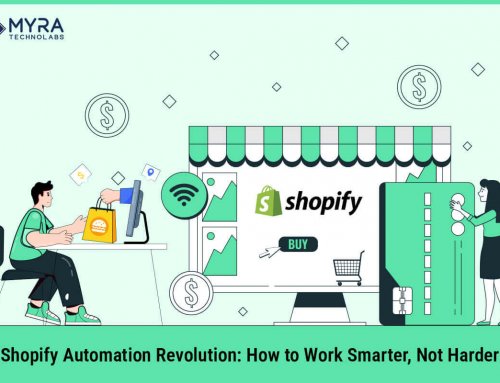Today eCommerce businesses are more focused on offering personalized experiences to their customers in the unique possible way. eCommerce stores can offer customization and personalization by investing in the UX factor. Now this includes displaying personalized content and offering personalized product recommendations through custom promotions & offers.
Since its inception in 2008, Magento has turned out to be a powerful eCommerce platform powering thousands of online stores and websites. As of 2023, Magento enjoys the eCommerce market share by 10.17%, thus playing a crucial role in eCommerce development services.
To perform the best and offer unmatched customer experience, newer Magento eCommerce development trends have come up. Whether it is about integrating AR/VR technologies or simplifying the checkout process, including these trends is key for the success of online business.
The Current Landscape of E-commerce User Experience
The eCommerce user experience landscape is continuously changing with businesses focusing on reaching the needs of users. Right from going for the mobile-first approach to having seamless checkout, eCommerce stores are leaving no stone unturned to ensure top-notch user experience is delivered.
It is challenging for online stores to meet the rising demands of users and offer consistent shopping experience. eCommerce development services are now opting for the latest technology trends to develop interactive and dynamic online solutions that can influence purchase decisions positively.
UX plays a key role in making user journeys on the website as intuitive and smooth as possible. It removes roadblocks and distractions from the navigation to help online stores boost conversions.
Trend 1: Mobile-First Design for Magento Stores
When it comes to Magento eCommerce development trends, mobile-first design is at the top of the list. Mobile responsiveness helps users easily navigate the site, browse products, and easily buy items using any device. For businesses, this means ease of building brand loyalty and delivering customer satisfaction.
Magento offers responsive themes and development tools that can help a Magento development company focus on mobile-first design. It also offers several plugins that can boost page loading speed. The speedy checkout with minimal steps is another highlight of this design.
To build mobile-friendly eCommerce stores, it is always advised to focus on the speed and performance of the online store. Again, coming up with a clutter-free design that has simple navigation and quick checkout attracts users to the site. Sites should also focus on improving search while simplifying the product discovery phase.
Trend 2: Personalization Strategies with Magento
Personalization strategies help businesses boost customer engagement and lead to higher conversions. The collected information will help them make improved business decisions. Again, personalization helps businesses build stronger connections with their users and brand loyalty.
To simplify product recommendations and the display of content, Magento comes with several tools. It includes content staging & previewing, customer segmentation, and displaying related products. Your Magento development company can also include third-party tools available in the market.
One of the leading activewear brands Gymshark used the catalog rules of Magento to create dynamic banners. Another brand named Sephora known in the beauty industry came up with virtual try-on experiences and personalized makeup tutorials by analyzing the previous purchases of the shoppers.
Trend 3: Progressive Web Apps (PWAs) in Magento
PWAs are offered under eCommerce development services and they are websites that offer native app-like experience to the users. Progressive Web Apps offer a better user experience and help the business reach a wider audience base. Apart from ensuring higher conversions, it helps the business reduce the bounce rate of their site.
Apart from offering a native-app-like experience, PWAs ensure faster loading speed. With PWAs, you can reduce the development time drastically and will require fewer resources for the task. You will be able to ensure mobile-friendliness to the solution thus boosting user engagement.
It is important to have a clear understanding of why you need to build PWA in the first place. The second thing you need to figure out is how you plan to integrate it into your Magento solution. You can either choose the pre-built themes that are available for PWA or go with complete customization. To implement it properly it is advisable to choose the help of a reliable Magento development company.
Trend 4: Augmented Reality (AR) and Virtual Reality (VR) Integration
Over the years, AR and VR technologies have been influencing different industry sectors and their influence on the eCommerce niche is also becoming evident. It is helping businesses connect with their target audience in new ways while disrupting the traditional ways of selling products or services.
Magento is integrating these technologies into eCommerce stores to offer shoppers outstanding features like virtual try-ons, project demonstration, better product visualization, and interactive storytelling.
Cosmetic giant L’Oreal has introduced a virtual makeup tool on its website by using Magento. This lets the shoppers try out a new shade of lipstick or nail paint before actually buying one. Similarly, IKEA, the furniture giant is offering virtual product visualization to shoppers by letting them try furniture at their places virtually. This lets them know whether the product will fit in their spaces or not before making any real purchase.
Trend 5: Streamlined Checkout Processes in Magento
Ensuring efficient and smooth checkout for your Magento store will ensure reduced cart abandonment and increase customer loyalty.
To ensure a seamless checkout experience on the Magento store, the platform offers several key extensions and features like single-step checkout, social logins, multiple payment methods, progress tracker, etc. Together, they all help the users to quickly shop without much hiccups.
A leading Swiss furniture retailer named Magentashop implemented a one-page checkout into their online store which displayed order previews. This helped the brand see a decrease in its cart abandonment rates and an increase in conversions. Similarly, a social commerce platform named Swat.io was able to increase its conversion rates by offering social logins in their Magento store at checkout.
Also, read the blog on the Power of PHP in E-commerce Development
Trend 6: Accessibility and Inclusivity in Magento Development
This is one of the key Magento eCommerce development trends to follow for building a stronger online business. Making Magento stores accessible to a larger user base will help the business with increased profits, better brand image, and larger customer satisfaction.
To make Magento stores more accessible, there are some built-in features. It also comes with themes and templates to help with the task along with various tools and extensions. To make Magento stores more accessible, it is advisable to carry out accessibility testing and make continuous improvements.
To build a user-friendly and accessible Magento store, it is important to focus on the visual aspects as well as the navigation of the store. The store should be properly tested by taking continuous feedback from customers. The role of a good Magento development company is crucial in it.
Conclusion
Here in this post, we have seen several Magento eCommerce development trends that are reigning in the market. This includes focusing on mobile-first design, adopting technologies like AR/VR, building PWAs, etc.
Keeping up with such trends will help your online store enjoy a competitive edge in the market. If you too wish to take your Magento store to the next level, don’t wait. Contact a Magento expert like Myra Technolabs today and enjoy the best of this platform for your business store.
With more businesses getting on the digital platform, the future of Magento eCommerce will be more focused on innovation, personalization, and smooth navigation. The changing expectations of users will push the boundaries of eCommerce development services and let it uncover the true potential of the platform.



